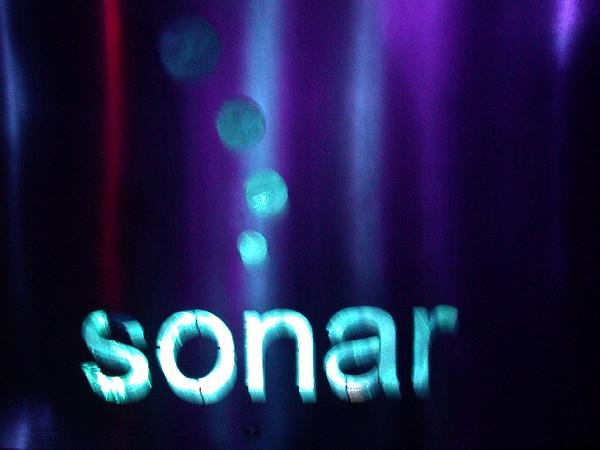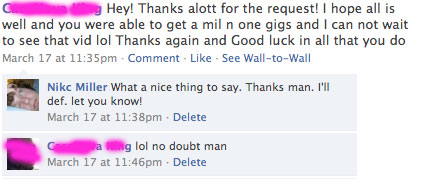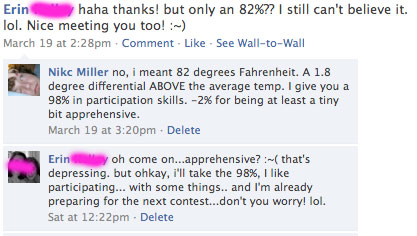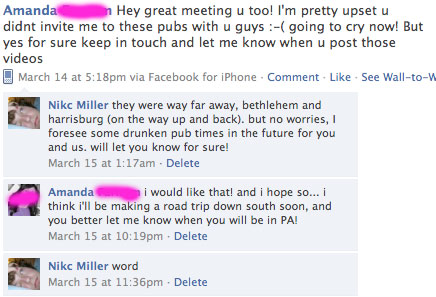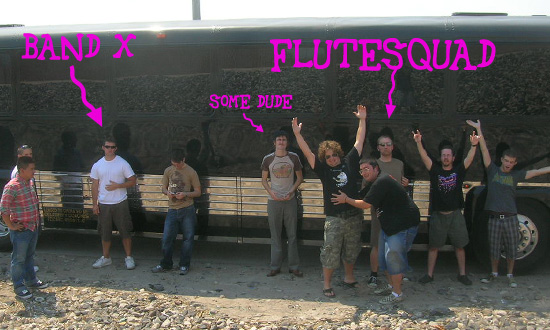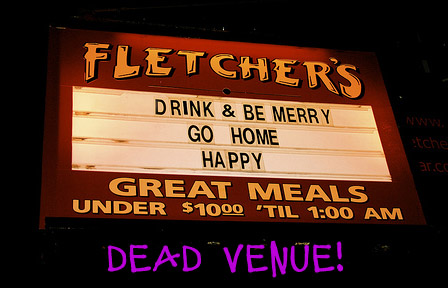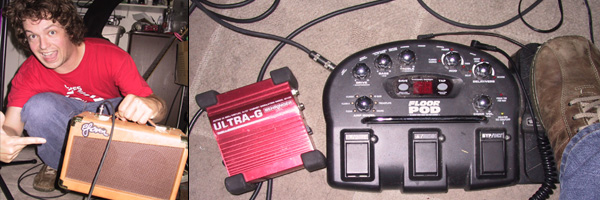This post was written by Stephen Thomas, better known as Horsepower in The Dirty Marmaduke Flute Squad. Download the Flute Squad video game HERE!
***
Sometime late in 2007, The Dirty Marmaduke Flute Squad released it’s first-ever multimedia project: DMFS: Escape, a DMFS video game. I had a blast making it, and I’m happy to have something to show for my many, many hours sitting at a computer.
Though we’re obviously not the only band to be featured in a video game (which I’ll explain about more later), as far as I can tell this is a first for any Baltimore band.

Chapter 1: STEVE LOVES VIDEO GAMES
When I was a little kid, my parents one-upped the rest of the kids in the neighbourhood. Instead of buying us the Atari 2600 (the widest-reaching console in video gaming at the time), they opted to go all-out and buy us the newest model: the Atari 5200. Every summer I was either outside riding my big wheels or later a bike, or I was inside sitting on a beanbag chair and playing video games. When my family moved to Maryland in 1985, I began collecting 8-bit Nintendo games; at its peak, I had over 180 different games in my collection.
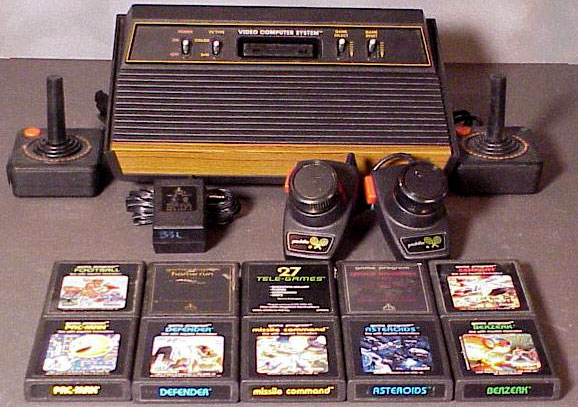
Many years later in life, I eventually was hired to test games for a video game studio (yes, that job actually exists!). And while working for the company, I had a chance to meet game developers, designers, coders, and artists. I had also learned about the burgeoning “indie gaming scene,” and all the fledgling hobbyist developers out there making their own games.
One website in particular I had found is known as The Daily Click, so named because it was originally created to feature games made with a series of programs by a company called Clickteam. I followed The Daily Click for many years, until finally, intrigued to no end with the prospect of possibly making my own games, I bought MultiMedia Fusion 2, the latest game creation tool created by Clickteam, in the summer of 2006. Fast forward perhaps to six months later. I’d successfully created a handful of small-scale game projects, and wanted to sink my teeth into something a bit more ambitious. The guys in the band were having fun with the games I’d made; the album Die Humpin! was released earlier that year, and it seemed like we were approaching another plateau. The “DMFS-iverse” was a bizarre enough place to feature its own video game. And the rest is history.
Chapter 2: PROJECT RESEARCH
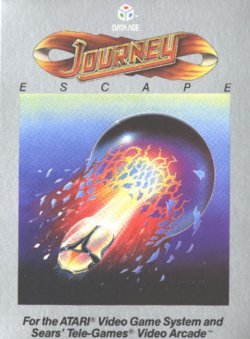 So I knew I wanted to make a game featuring the band…but what type of game could contain us? A Pac-Man clone seemed too simplistic, Q-Bert was out, a shoot-em-up didn’t really fit, and my skills weren’t up to making a full-featured role-playing game. I began looking deep into video game history to find some inspiration.
So I knew I wanted to make a game featuring the band…but what type of game could contain us? A Pac-Man clone seemed too simplistic, Q-Bert was out, a shoot-em-up didn’t really fit, and my skills weren’t up to making a full-featured role-playing game. I began looking deep into video game history to find some inspiration.
The chief inspiration for DMFS: Escape seemed almost too obvious, now that I think about it. I remembered playing a dreadful little Atari 2600 game called Journey: Escape which was a dodge-em game featuring none other than the rock band Journey. The gameplay of DMFS: Escape is an almost direct adaptation of Journey: Escape‘s system: run and dodge past obstacles, collecting money as you go.
If only in the sense of a potential video game, the parallels between Journey and DMFS were striking. One of the greatest rock bands on earth was featured in its own video game; now, one of the wackiest bands on earth would be. I announced my finds to my bandmates, and after unanimous approval, I began work on the project.
Chapter 3: DESIGN AND CODING
The greatest strength of the MultiMedia Fusion 2 toolkit is that you don’t need to know a lick of programming to come up with something half-decent. And me personally, I had a distinct lack of programming skills coupled with a vast imagination. MMF2 and I were a match made in heaven.
To explain the MMF2 development suite as clearly as possible, let me start off with a hopelessly technical statement: MMF2 is an object-oriented programming development kit that uses an intuitive combination of conditions and if-then statements. But to make it much, much more simple, imagine Super Mario Brothers, for example, and how you would make something like that work. For “World 1-1,” you start off with a plain brick platform. That’s one object. Standing on top of that object is Mario, which is another object. The little mushroom dudes are objects, as are the coins, the coin blocks, the turtles, and the turtle shells that bounce around.
An example of an if-then statement used to make the Mario object move would be “IF the player presses Right on the joystick, THEN move Mario right.” To move left, it would be the same kind of thing, only replacing “Right” with “Left” in both instances. “IF the player presses the Jump button, THEN make Mario jump upwards.”
Things can become a little more complex, too. “IF the player presses Right on the joystick, AND IF the player presses and holds the Shoot button, THEN move Mario to the Right twice as fast.” So you can combine several IF statements into a list of conditions that need to be met in order to make things happen. Here’s another one: “IF Mario is coming down from a jump, AND IF Mario’s feet land on a mushroom dude, THEN destroy the mushroom dude, AND THEN add 100 points to the player’s score.”
Using the MMF2 interface, the game maker can combine all sorts of combinations of if-then statements with the objects they include in the game. There’s also a full-featured graphics program to help you animate and draw all the objects you want. With the exception of a handful of digital photographs, DMFS: Escape has completely original graphics, all drawn and animated by me. The bottom line is that if you have the patience, even the worst self-described artist can come up with some decent results if they put a lot of energy and effort into it.
Chapter 4: FINISHING TOUCHES
Graphics and movement aren’t the only things needed for a typical video game these days; you need sound effects and background music to create an immersive, entertaining game. I was fortunate on both counts to have both resources available in abundant supply. For the sound effects, the band and I spent an evening’s worth of rehearsal recording voice clips in the home studio of our lead guitarist, Ryan Graham.
Background music was another integral aspect of the game. For that, I enlisted the help of Jeff “The Baltimore Taper” Mewbourn. He’d been following us for several years now, and had collected over two dozen recordings of live DMFS shows. After securing his permission, I used MP3s of our performances as background music for all the levels and different game screens.
Once you implement all the aspects of your game, it’s time for your testers to play the game and make sure everything works as intended. I enlisted the help of the band for suggestions and feedback in order to make the game more fun. To that end, I implemented the “KashGrab Kredits” system, which allowed the player to add on additional features to the gameplay: a photo album, a jukebox, the infamous “Next Great American Band” mode, and other special features. This adds replay value, making the game download or purchase worth additional plays due to the unlockable features and added material.
EPILOGUE
DMFS: Escape is the hard work of a dedicated coder and artist through several months, collaborators like The Baltimore Taper, dedicated testers, and one crazy band. It’s also a free download, and a great way for the player to spend the better part of an hour messing around on the computer and listening to some of our live music.
At the very least, we’ve attempted to give you the same thing we offer in our live shows: a chance to be entertained and forget about the real world, if only for a brief moment in time. I’m proud of DMFS: Escape, and learned a tremendous deal from my game-making experience. It’s only inspired me to try even more ambitious and in-depth projects today and into the future.
